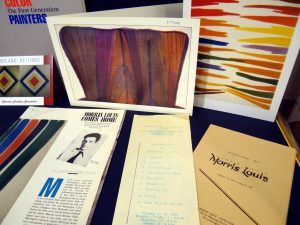In conjunction with the recent exhibition “Hard-edged, Bright Color: The Washington Color School” produced by Angelique Roy at the American Art and Portrait Gallery (AA/PG) Library, the blog has been exploring the group of color artists featured in the exhibition.
Tag: Washington Color School

In conjunction with the exhibition “Hard-edged, Bright Color: The Washington Color School” at the American Art and Portrait Gallery (AA/PG) Library, the blog will be exploring the group of color artists to accompany the exhibit running until late spring. We’ll be exploring three of the “first generation” Washington Color School artists: Thomas Downing, Howard Mehring, and Paul Reed.

In conjunction with the exhibition “Hard-edged, Bright Color: The Washington Color School” at the American Art and Portrait Gallery (AA/PG) Library, the blog will be exploring the group of color artists to accompany the exhibit running until late spring. We’ll be exploring three of the “first generation” Washington Color School artists: Morris Louis, Kenneth Noland, and Gene Davis. You can read the first post in this series here.
The 1950s and 1960s saw the emergence of a new ‘School’ in the American capital, the Washington Color School. Experimenting with fields of bright colors achieved by applying thinned paint onto large canvases, these artists sought to enrapture a viewer without the use of narrative or symbolism.

With the Smithsonian American Art Museum’s upcoming exhibition, Gene Davis: Hot Beat, the American Art and Portrait Gallery (AA/PG) Library is hosting a complementary exhibition of ephemera showcasing a group known as the Washington Color Painters, or perhaps better recognized by their more dubious title, the Washington Color School.
